|
HOME: www.hiltonpond.org |
|||
THIS WEEK at HILTON POND Subscribe for free to our award-winning nature newsletter (Back to Preceding Week; on to Next Week) |
11-19 Nov 2017 & 20-28-Jan 2018 Come be part of a real |
JANUARY 2017: With the arrival of 2017, we enter our 36th calendar year of operation at Hilton Pond Center for Piedmont Natural History, established in 1982 on 11 acres of family property near York SC--the heart of the Carolina Piedmont. Back in February 2001 we got with the times and posted our first installment of "This Week at Hilton Pond" on the Center's new Web site. We've written about many topics since, everything from birds and bees to wildflowers and trees--and even about our nature-related trips to California, Japan, and the Neotropics. This latest installment--our 650th--deals with miscellaneous nature observations made over the just-ended mixed-up month of January 2017, when temperatures lurched from the high 50s to the mid-teens, back up to nearly 80°, and then down to sub-freezing again. We're ever hopeful you learn something new and interesting from these on-line photo essays, and that we'll still be posting them for year to come. All text, maps, charts & photos © Hilton Pond Center 1 JANUARY 2017 Hilton Pond Center's first banded bird of 2017 entered our traps just post-dawn on New Year's Day; 'twas a ground-feeding Song Sparrow, our 439th of this species banded since 1982. The sparrow was followed shortly thereafter by a male House Finch, of which a dozen or so had been chowing down all morning at a big sunflower tube feeder.
All text, maps, charts & photos © Hilton Pond Center The finches fed throughout the morning when suddenly they scattered while other birds in nearby vegetation froze in place. Two Downy Woodpeckers, in particular, plastered themselves motionless to vertical tree trunks, eyes moving ever so slightly in their sockets. Such freeze or flee behavior is usually a sign a hungry accipiter hawk has zoomed into the neighborhood and, sure enough, when we scanned with binoculars we found perched on a snag above the pond a seemingly large (i.e., likely female) Cooper's Hawk. (See our grainy rainy day photo above, taken from about 75 yards away. And check out those long skinny toes armed with sharp talons capable of instantly killing a small bird.) Accipiters are fast-flying raptors with short, rounded wings that allow them to barrel through shrubby areas and woodlands in pursuit of smaller birds that comprise the majority of their prey. Some folks don't like Cooper's Hawks--and their smaller cousins, the Sharp-shinned Hawks--because of their collective bird-eating habits, but these highly efficient predators are an integral part of the natural scheme. And as we always say, if you put out sunflower seeds to attract chickadees, you're actually offering chickadees that feed your Cooper's Hawks! All text, maps, charts & photos © Hilton Pond Center 3 JANUARY 2017 A huge rainstorm that headed toward Hilton Pond Center the evening of 2 January essentially petered out when it hit York County SC--certainly not an unusual occurrence. Nonetheless, the Center's digital rain gauge registered 0.75" during the night of 2-3 January, with 1.3" on the 2nd. All text, maps, charts & photos © Hilton Pond Center 4 JANUARY 2017 We were advised by area meteorologists to brace ourselves at Hilton Pond Center for brutally low temperatures predicted for near 10° F on 8 January. When it gets that cold, birds and other wildlife still need water for drinking and bathing, so we're always sure to turn on a de-icer in our main birdbath. Through the years we've had good success with industrial de-icers made by Farm Innovators (see photo at left). These devices are available in various wattages from 50W to 500W depending on how much water you're trying to heat. They're thermostatically controlled, shut off at about 38 degrees, and don't use all that much power. CAUTIONARY NOTE: If you use ANY submersible de-icer make sure it's plugged into a GFI outlet (Ground Fault Interrupter)--the same kind of outlet you should have in your bathroom or near your kitchen sink. As an alternative you can use a GFI extension cord and plug it into a standard outlet. De-icers and the grounded extension cords are both available at many farm supply stores and on Amazon--bird specialty stores also have them--but if you order from Amazon please sign up specifically for AmazonSmile and designate Hilton Pond Center for Piedmont Natural History as the charity recipient for a portion of your purchase price. That way you can help the Center do its work while helping nature do hers. Stay warm! All text, maps, charts & photos © Hilton Pond Center 7 JANUARY 2017
All text, maps, charts & photos © Hilton Pond Center Hilton Pond Center posted an obligatory weather report on 7 Jan 2017 because that day brought our first snow event of the new year. As of 11 a.m. the snow gauge measured a whopping 3/8"--barely enough to cover the ground (see photo above)--with a few random flakes still falling. (There was no snow here before 4 a.m. the morning of the 7th.)
All text, maps, charts & photos © Hilton Pond Center It was quite a bust when you consider locales not too far from here got several inches. Despite the shallow snow depth Northern Cardinals (male, above) and White-throated Sparrows were forced to scratch around in the white stuff for cracked corn and millet while more House Finches than usual this winter were dining at our sunflower seed feeders. All text, maps, charts & photos © Hilton Pond Center 8 JANUARY 2017 On 8 January wife Susan Hilton called out that a large bird was on the ground in the brush near one of our feeder stations at Hilton Pond Center. We rushed to the dining room window for a rear view of what looked like a large hawk--much bigger than the Cooper's Hawk that has been hanging around this winter and dive-bombing our feeding flocks a few times each day. The big bird even appeared larger than several Red-shouldered Hawks that frequent our bottomland woods, strongly suggesting we were looking at a Red-tailed Hawk. From the rear we could see light barring on the tail, further indication it was a young red-tail that had not yet acquired its signature field mark.
All text, maps, charts & photos © Hilton Pond Center As we watched--camera and long lens at the ready--the hawk's attention was directed at some sort of captured prey hidden from our view by the raptor's own body. After several minutes the big bird finally turned and confirmed the initial call: Immature Red-tailed Hawk, with an Eastern Gray Squirrel in its talons. Numerous songbirds continued to feed unperturbed by this hungry buteo while the red-tail tugged at the squirrel carcass with its heavy decurved bill, occasionally pausing to gulp down a tasty morsel. We seldom see Red-tailed Hawks at Hilton Pond Center, mostly because these raptors hunt for small mammals while soaring over open spaces; these days the property is primarily wooded and not suitable for a bird with four-foot wingspan. Nonetheless, this young red-tail somehow noticed one of the numerous squirrels that nest in tall trees and continuously steal our sunflower seeds. The hawk was fast enough to capture the bushy-tailed rodent for a late lunch--a fascinating predator-prey relationship that is all-important for environmental balance in the Carolina Piedmont--and even at our bird feeders. All text, maps, charts & photos © Hilton Pond Center 9 January 2017 If you follow our photo essays or read our postings on Facebook and elsewhere you're aware we like to celebrate milestones reached at Hilton Pond Center. The morning of 9 January brought a really BIG one when an after-second-year Blue Jay (see photo) became the sixty-five-thousandth bird banded locally since 1982. (Arabic numerals write that as 65,000; in Roman numerals it's simply LXV, with a line above it.) If you don't mind our saying so, that is a LOT of birds. (Since beginning research here 35 years ago we've averaged 1,806 banded birds per year, and that hasn't even been our full-time job.)
All text, maps, charts & photos © Hilton Pond Center The Blue Jay was especially appropriate because that species was our research focus while in grad school in Minneapolis-St. Paul; how ironic this particular bird would be the one to reach the 65,000 mark on a frigid, snowy day--much like those experienced doing four very long, very cold, very dark winters in the field in Minnesota. Bird banding tells us much about bird migration, longevity, site fidelity, and general population dynamics, so it's an activity we intend to continue at Hilton Pond and elsewhere--although maybe not for another 35 years and another 65,000 birds. All text, maps, charts & photos © Hilton Pond Center 10 January 2017 The low temperature overnight (9-10 January) at Hilton Pond Center wasn't nearly as frigid as the mid-teens and low 20s of the preceding three nights, but daytime temps still weren't warm enough to melt that 3/8" of icy snowfall we got over the weekend. On the morning of 10 January on the back deck of our old farmhouse we found plenty of evidence birds abound at the Center, i.e., hundreds of avian tracks left in the white stuff.
All text, maps, charts & photos © Hilton Pond Center The two tracks in our photo likely were made by a White-throated Sparrow, based on size, placement, and the fact that we are hosting numerous members of this species this winter. Since these particular tracks and those around them were always side-by-side it indicates the bird that made them gets around by hopping--something White-throated Sparrows certainly do. Other birds such as Mourning Doves strut rather than hop, so their tracks would alternate right to left in the snow--like humans. (Notice the tracks in our photo are slightly "pigeon-toed." That turned-in configuration, we think, is typical of many birds and not just pigeons.) Seeing those tracks was a reminder of high school biology teaching days when we assigned a lesson entitled "Locomotion Commotion." In it we asked students to describe ways by which different terrestrial and aquatic animals move, from the slithering of snakes to the galloping of zebras to the paddling of turtles. It was an interesting and fun way to help them hone their nature observation skills--and gave them good reason to get outdoors or go to the zoo. All text, maps, charts & photos © Hilton Pond Center 23 January 2017
All text, maps, charts & photos © Hilton Pond Center After being gone on and off for nearly two weeks we returned to Hilton Pond Center on 23 January to find it had rained 2.39" of in the preceding four days. Although that's a welcome amount, we need much more to replenish the pond before spring arrives; at least the floating dock is no longer resting in muck on the bottom. Hooded Mergansers (one pair, above) must have liked the slightly deeper pond because four of them were out there diving and feeding--this time two drakes and two hens. We wonder if lower water levels in the pond have concentrated the fish population and made catching food a little easier. (We also hosted four apparent female mergansers, photo below, for just one day in late December 2016. It's possible one or more of these birds is an immature first-winter male; a closer view might have helped resolve this.)
All text, maps, charts & photos © Hilton Pond Center 24 January 2017 Ironically, after a Blue Jay became our 65,000th bird banded at Hilton Pond Center, there was a nice mention this week on the "Northern Woodlands" Web site about our Minnesota grad school work. The article Boisterous Blue Jays Flock in Winter referenced our observation of individual jays gathering several acorns and flying up to a mile with them before caching the nuts. Since even jays sometimes forget where they bury acorns, an oak tree capitalizes on this bird behavior to disseminate its seeds much further than does a squirrel that walks only a relatively short distance before caching. Squirrels get all the credit, but it may be Blue Jays that are doing the REAL work. All text, maps, charts & photos © Hilton Pond Center 25 January 2017 A riddle: What do basking turtles in the Carolina Piedmont do under cloudless skies in late January when the daily high temperature is 73° instead of the expected 40° or so? Answer: They bask.
All text, maps, charts & photos © Hilton Pond Center The photo above taken on 25 January at Hilton Pond Center showed a group of Painted Turtles and one larger Yellowbelly Slider (second from left) taking advantage of our much-warmer-than-usual winter weather. It is not uncommon for our smaller Painted Turtles to come out in midwinter on days like this, but we were a bit surprised to see a slider--a species that usually doesn't become active until true spring. These turtles are quite wary and we had to sneak up under cover to get even our distant photo from at least 50 yards. As soon as we stood up the turtles slid off their sunny perches and submerged themselves in what surely must have been uncomfortably cold pond water. All text, maps, charts & photos © Hilton Pond Center 31 January 2017 All text, maps, charts & photos © Hilton Pond Center (Click on graph above for a larger version in a new browser window) The first month of 2017 ended on a bang at Hilton Pond Center with a high temperature of 70.5°F--warm but not even close to our record-breaking 79.2º on Friday the 13th. A close look at the temperature graph above shows the month did have some expected cold spells: It was 15.1º on 8 January, 16.1º on the 9th, and 22.8º on the 30th. (That made for a 47.7° temperature swing between the morning of the 30th and the afternoon of the 31st.) Despite those cold mornings, daily highs on several days made it downright uncomfortable to wear a jacket and long pants when we wandered the Center's nature trails. In nearby Charlotte NC, which has compiled a century's worth of weather records, the daily high temperature in January 2017 was above the historical average on an astounding 22 of 31 days! Yes, it looked most afternoons like January couldn't make up its mind about whether it was a winter month or a spring one--a seemingly pleasant ambivalence we humans and mother nature may end up paying for when spring and summer really do arrive. All text, maps, charts & photos © Hilton Pond Center Don't forget to scroll down for Nature Notes & Photos,
Checks can be sent to Hilton Pond Center at: All contributions are tax-deductible on your |
|---|
|
"This Week at Hilton Pond" is written and photographed by Bill Hilton Jr., executive director of Hilton Pond Center for Piedmont Natural History
|
|
|
Please refer "This Week at Hilton Pond" to others by clicking on this button: |
Comments or questions about this week's installment? Send an E-mail to INFO. (Be sure to scroll down for a tally of birds banded/recaptured during the period, plus other nature notes.) |

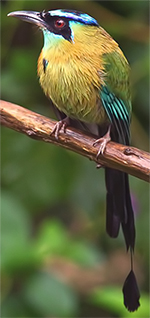 JUST ANNOUNCED!
JUST ANNOUNCED!  During years since we have implemented a strategy in which conservation, natural history research, and environmental education are tightly intertwined. In the early days we shared local findings with students in our high school and college biology classrooms, via public presentations, and through a newspaper column and book called
During years since we have implemented a strategy in which conservation, natural history research, and environmental education are tightly intertwined. In the early days we shared local findings with students in our high school and college biology classrooms, via public presentations, and through a newspaper column and book called 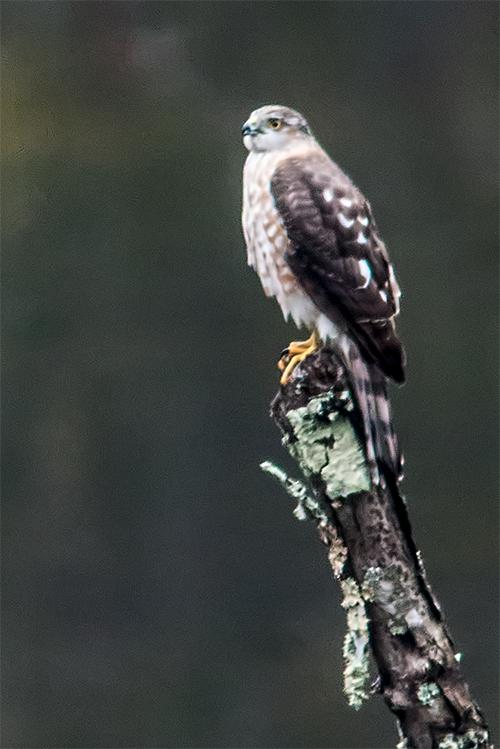
 Altogether we've had a very welcome 2.35" of precipitation in in just the first three days of 2017. We blame relative lack of local rainfall when others nearby are getting drenched on what we call the King's Pinnacle Effect. As storms come from the west or southwest they hit a line of low mountains that parallel I-85 from Gaffney SC past King's Pinnacle
Altogether we've had a very welcome 2.35" of precipitation in in just the first three days of 2017. We blame relative lack of local rainfall when others nearby are getting drenched on what we call the King's Pinnacle Effect. As storms come from the west or southwest they hit a line of low mountains that parallel I-85 from Gaffney SC past King's Pinnacle  In fact, just to be sure we ordered an additional heater in advance of those single-digit readings.
In fact, just to be sure we ordered an additional heater in advance of those single-digit readings.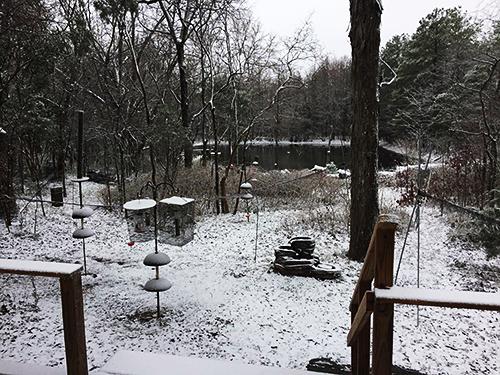
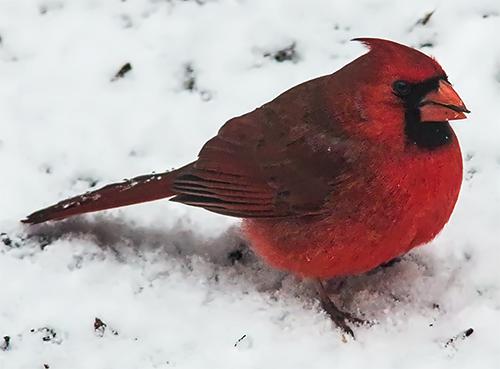
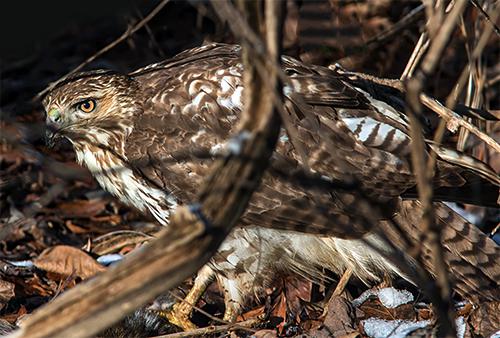
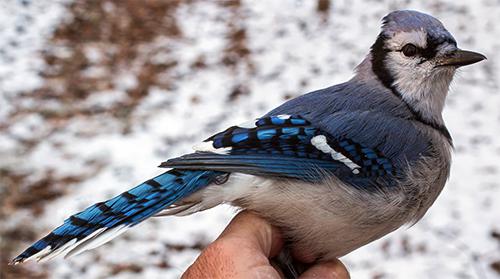
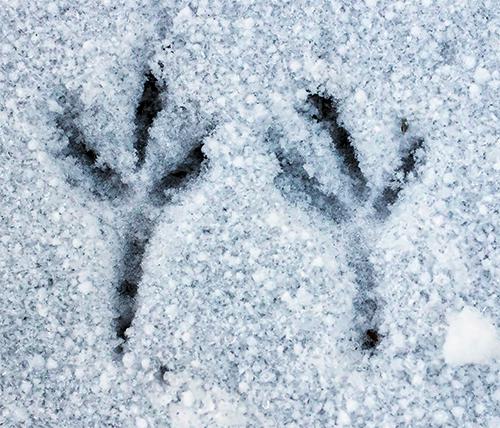
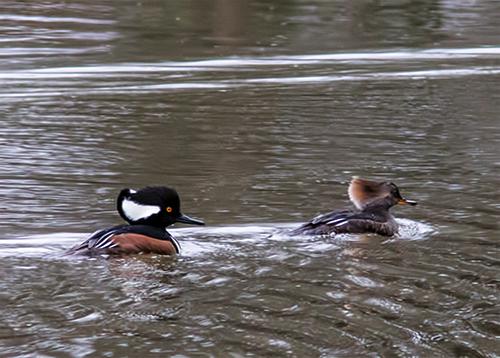
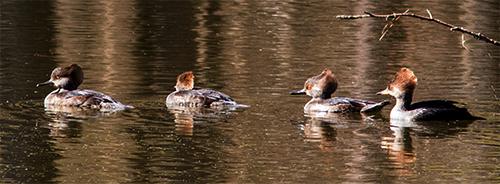












 Oct 15 to Mar 15:
Oct 15 to Mar 15: